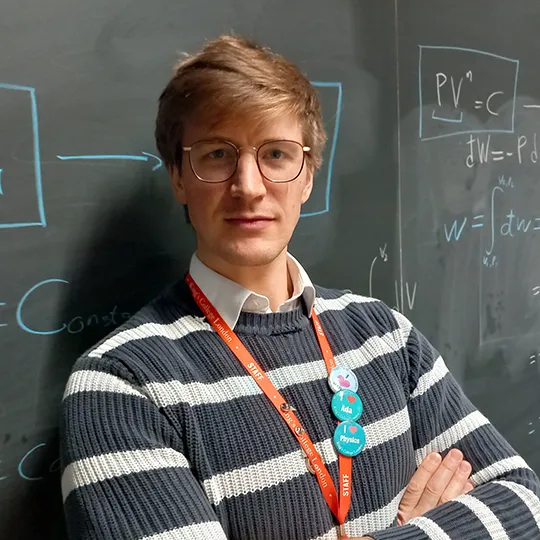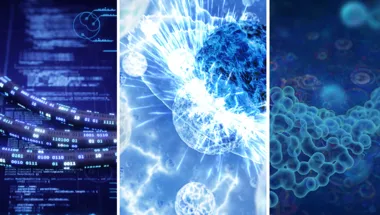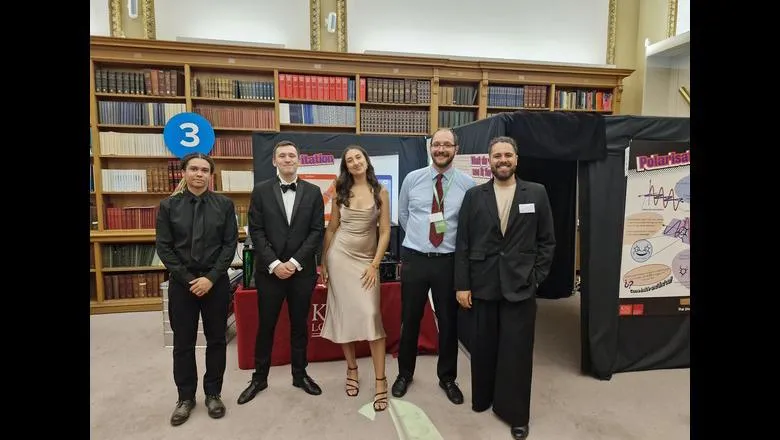
Dr Robert Michael Jones PhD
Postdoctoral Research Associate
Research interests
- Physics
Biography
Dr Robert Jones is a Postdoctoral research associate in the Attosecond Quantum Physics Laboratory where he works with theoretical and computational methods specialising in condensed matter and light - matter interactions.
His research is focused on ultrafast processes occurring within matter when subject to high intensity laser light, and the nature of optical fields which may lead to exotic phenomena. To achieve this, he brings together multiscale numerical modelling techniques from purely quantum mechanical to finite element method.
Robert received his BSc (Physics) and MPHYS (Theoretical Physics) from the University of Leeds, United Kingdom, in 2018. He proceeded to receive his MSc (Mathematics) and his PhD from King’s College London in 2019 and 2023 respectively where he was funded by the EPSRC Cross Disciplinary Approaches to Non-Equilibrium Systems (CANES) Centre for Doctoral Training (CDT). His research focussed on modelling catalytic processes activated by light incident on the surface of metallic nanoparticles.
Research interests
-
Plasmonic metallic nanoparticles.
-
Multiscale modelling of nanoarchitectures.
-
Strong-field phenomena.
-
Structured light.
-
Nonlinear and chiral optics.
Publications
- Vanzan, M., Jones, R..M., Corni, S., D’Agosta, R. and Baletto, F. (2022), “Exploring AuRh nanoalloys: a computational perspective on the formation and physical properties.“ ChemPhysChem. 10.1002/cphc.202200035
- Zhao, W., Jones, R..M., D’Agosta, R. and Baletto, F. (2022), “Making Copper, Silver and Gold Fullerene cages breathe.” Journal of Physics: Condensed Matter 10.1088/1361-648X/ac5b00
- Jones, R..M., D’Agosta, R. and Baletto, F. (2022) “The effects of Pt doping on the optical properties of Au20.” European Physical Journal: Applied Physics 10.1051/epjap/2022220011
- Jones, R.M., et al. (2022) Structural characterisation of nanoalloys for (photo)catalytic applications with the Sapphire library. Faraday Discussions 10.1039/D2FD00097K
Further details
See Robert's research profile
Research

Cross-Disciplinary Approaches to Non-Equilibrium Systems (CANES)
The mission of CANES is to train future research leaders in the understanding, control and design of systems far from equilibrium, based on rigorous training in theoretical modelling, simulation and data-driven analysis, and a breadth of awareness of common themes across disciplines.
News
King's scientists dazzle and amaze at Royal Society Summer Science Exhibition 2024
Unravelling the unseen wonders of light, physicists showcased their work to thousands of the general public and scientific community.

Research

Cross-Disciplinary Approaches to Non-Equilibrium Systems (CANES)
The mission of CANES is to train future research leaders in the understanding, control and design of systems far from equilibrium, based on rigorous training in theoretical modelling, simulation and data-driven analysis, and a breadth of awareness of common themes across disciplines.
News
King's scientists dazzle and amaze at Royal Society Summer Science Exhibition 2024
Unravelling the unseen wonders of light, physicists showcased their work to thousands of the general public and scientific community.

